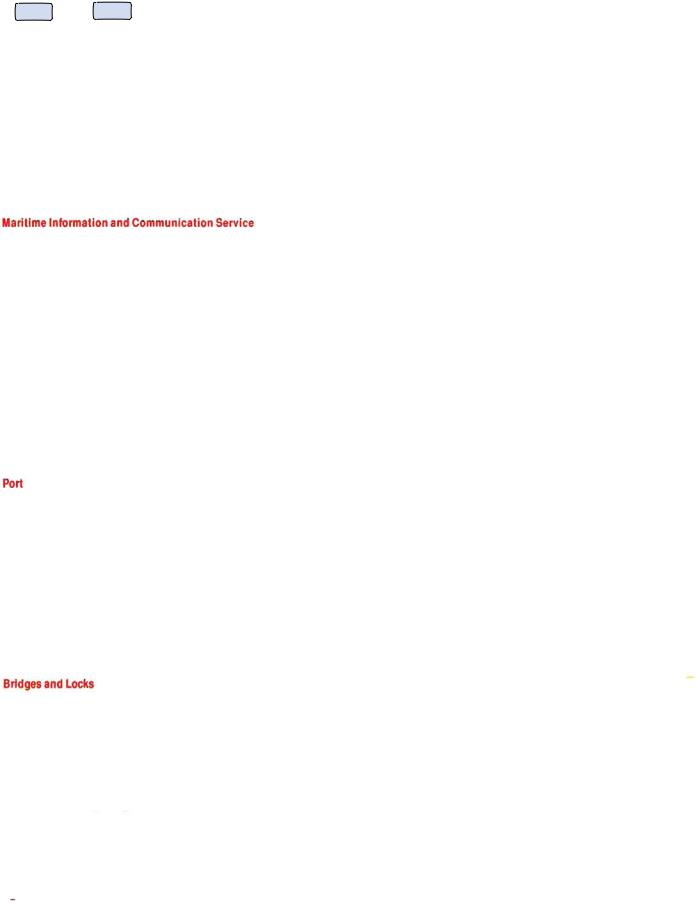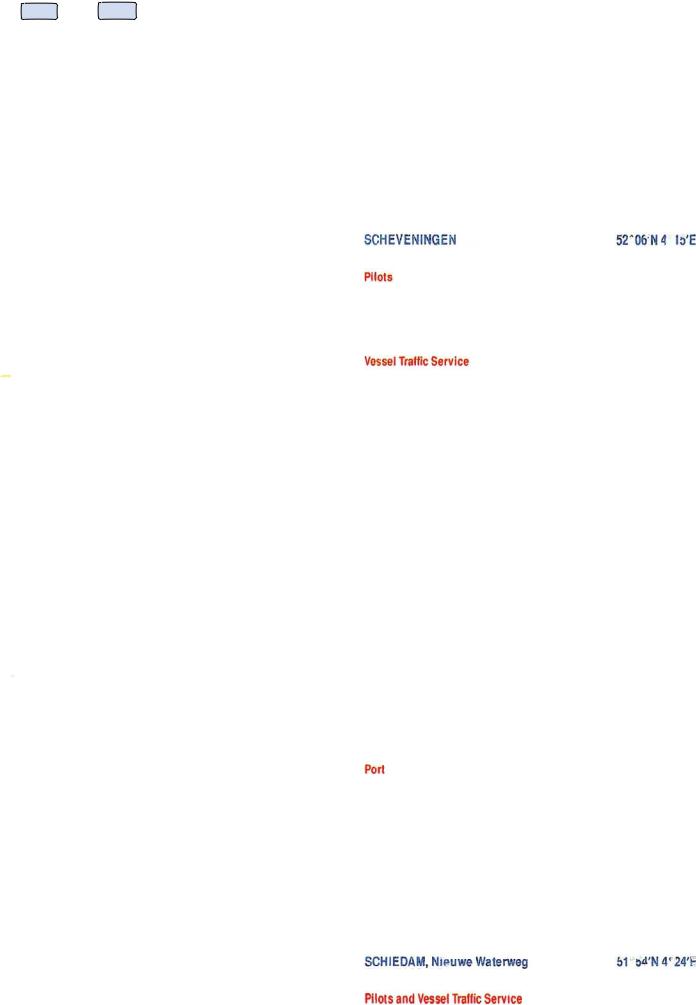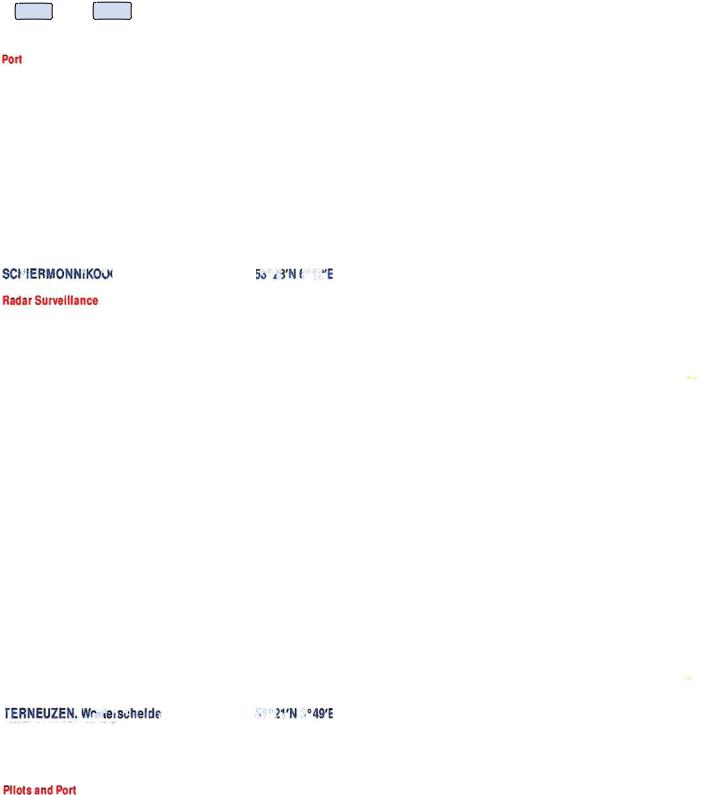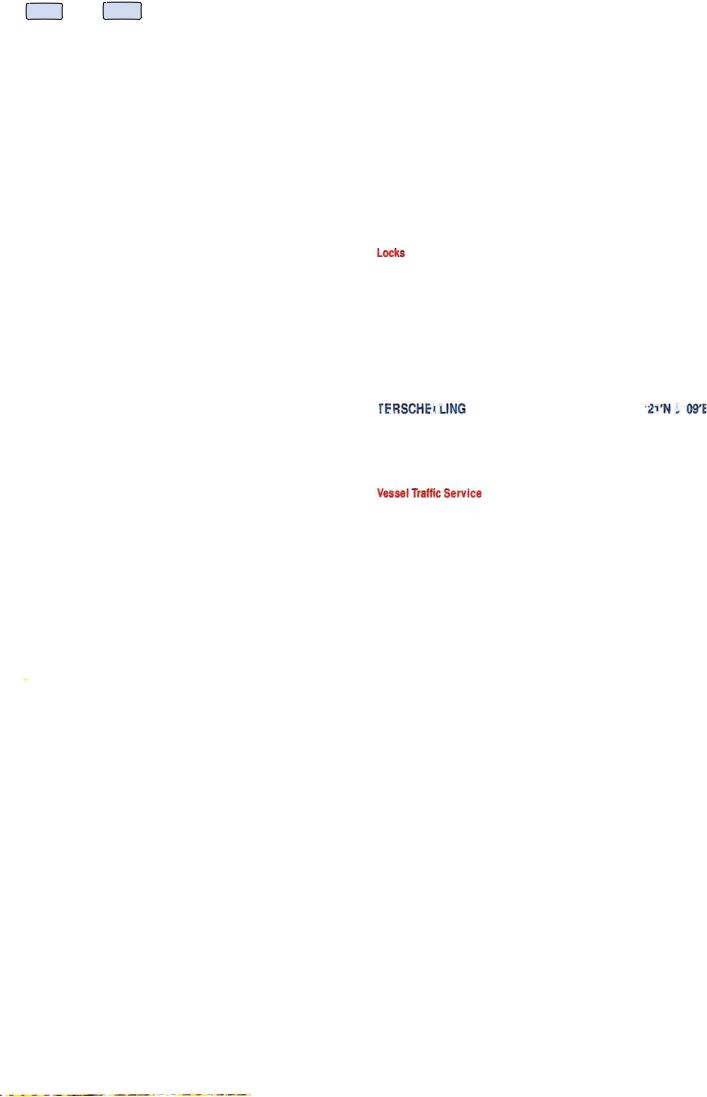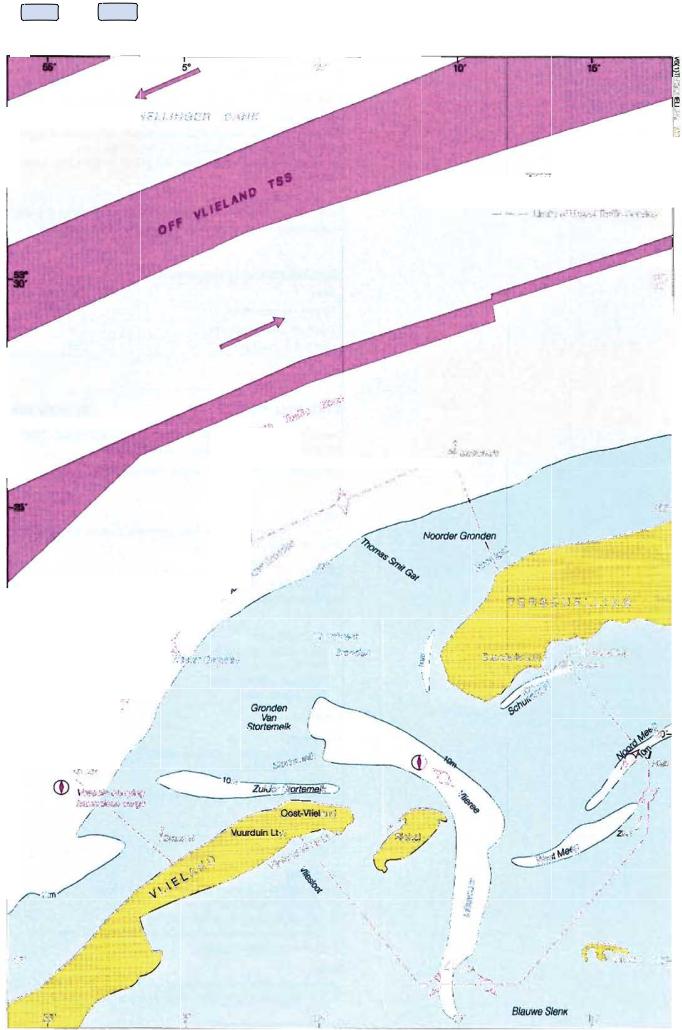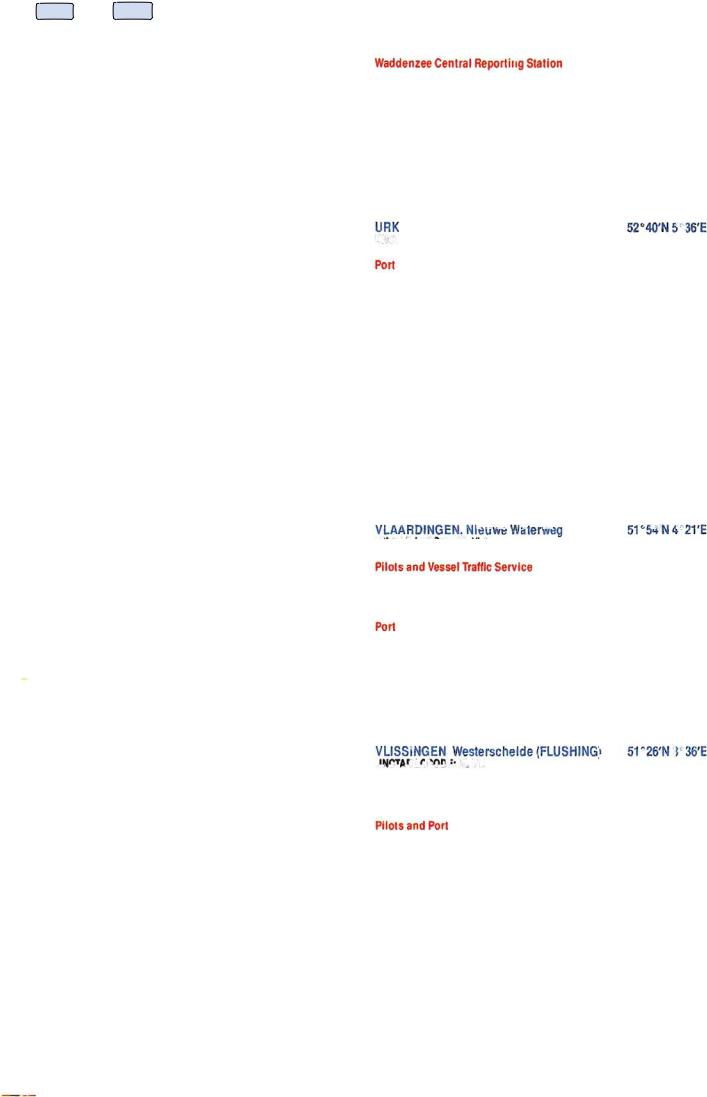
NP 286(1) United Kingdom and Europe
.pdf
Contents |
Index |
|
|
|
|
|
NETHERLANDS |
|
|
|
|
|
|
Vessel |
Information |
!II |
thod |
Time |
|
|
|
required |
I |
e |
|
|
|
|
|
|
|
24h betore |
|
I |
|
|
|
|
ETA at Maas |
|
|
All vessels |
|
|
|
1 Center |
Noxious and |
|
|
To Hr Mr |
Lt buoy |
dangerous |
|
||
less than |
A.B.G,I,J. |
|
||||
Rotterdam |
(52·00'·90N |
goods that |
|
|||
t7·40m |
0, P.O, T1 . |
|
||||
via Electronic |
3·48'BOEI 01. |
; have already |
|
|||
draught |
T2,U.W. |
|
||||
Data |
I it departure |
1 been reported |
|
|||
except those |
XI. X2.X3. |
|
||||
Interchange |
. trom previOUS |
need only be |
|
|||
01 less than |
X4. X5 |
|
||||
(EOn (see (3)) |
port was |
: reported on |
|
|||
300GT |
|
|
||||
|
|
|
within last |
I' request |
|
|
|
|
|
|
|
||
|
|
|
|
24h. as soon |
|
|
|
|
|
|
as possible |
. |
|
|
|
To HrMr |
24h belore |
IThis message |
I |
|
|
|
Rotterdam |
||||
|
|
arrival at the |
||||
|
|
via E·mail: |
MaasCenter |
·can be sent |
|
|
|
|
rotterdam@ |
Lt buoy or. |
together |
|
|
|
|
dirkzwager. |
Iwith the lirst |
I |
||
|
A.B.I.O,O |
ndeparture |
||||
|
com |
i Irom previous |
message. |
|
||
|
|
Fax: +31(0)10 |
but not any |
|
||
|
|
5925767 |
port was |
Isooner than |
|
|
|
|
within last |
|
|||
|
|
Telex: +44 |
24h. as soon |
i 24h betOle |
|
|
|
|
21058 DIRK |
as possible |
Iarrival |
|
|
|
|
NL |
|
|||
|
|
|
|
|
||
|
|
To HrMr |
|
|
|
|
|
|
Rotterdam |
|
|
|
|
|
|
via E·mail: |
|
I |
|
|
|
|
rotterdam@ |
6h belore ETA |
|
||
|
|
dirkzwager. |
|
|||
|
A.B.I.O,O |
com |
at the Maas |
|
|
|
|
CenterLt |
; |
|
|||
|
|
Fax: +31 (0) 10 |
|
|||
|
|
buoy |
I |
|
||
|
|
5925767 |
|
|||
|
|
Telex. +44 |
|
|
|
|
|
|
21058 DIRK |
|
i |
|
|
|
|
NL |
|
|
||
|
|
|
|
|
||
All vessels, |
|
Sector Maas |
3h betore ETA |
|
|
|
except those |
|
at the Maas |
|
|
||
A. D,I.O.O |
Approach via |
|
|
|||
less than 300 |
CenterLt |
|
|
|||
|
VHFChOl |
|
|
|||
GT |
|
buoy |
|
|
||
|
|
|
|
|
||
(3) Electronic |
Data Interchange (EDI): Vessels should advise all relevant |
|||||
inlormation to the loCal agent whO wililransler the details inlO an EDI standard message
which is subsequentfy forwarded to the Hr Mr.
(4) Dangerous Goods: Vessels carrying dangerous goods should also advise the inlormation stated in the following \able:
Vessel |
Information |
Method |
Time |
Remarks |
|
required |
|||||
|
|
|
|
||
Notification of dangerous goods on arrivat |
|
|
|||
Cargo |
|
|
|
|
|
vessels. oil. |
|
|
|
destination |
|
chemicals |
|
|
|
||
|
|
|
I"·'on departure |
||
orgas |
|
To HrMr |
On departure |
||
tankers, and |
|
Irom the port |
is unknown. |
||
|
ROllerdam |
Ireport to the |
|||
passenger |
|
01 loading or |
|||
|
via Electronic |
I Hr Mr as soon |
|||
vessels |
A. B.G.I.O, |
at the latest |
|||
Data |
|
||||
carrying |
P.n, U. W |
on entering |
|
||
Interchange |
is known. bul |
||||
|
|
|
|||
noxious and |
|
(EDI)(see |
Netherlands 1"at the_tatest"" |
||
dangerous |
|
(3)) |
territorial |
·on entering |
|
goods under |
|
waters |
|||
|
|
Nethertands |
|||
|
|
|
|
||
way to or
departing from |
temtorial |
|
waters |
||
Rotterdam |
||
|
158

Contents Index
NETHERLANDS
--
Vo"' |
Infonnation |
Method |
TIme |
Remarks |
|
required |
|
||||
|
|
|
|
-. |
|
|
|
|
|
|
|
Notification of dangerous goods on departure |
|
||||
Cargo |
|
|
|
|
|
Ivessels. oil. |
|
|
|
|
|
chemicals |
|
|
|
|
|
orgas |
|
|
lbHrMr |
|
|
lankers. and |
|
|
|
|
|
|
|
Flotterdam |
|
|
|
passenger |
|
|
|
|
|
|
|
via Electronic |
|
|
|
vessels |
A.B.G.I.O. |
|
|
||
Data |
3h before ETC |
|
|||
carrying |
P. TI. U. |
W |
|
||
Interchange |
|
|
|||
noxiOus and |
|
|
|
|
|
|
|
(:01) (see |
|
|
|
dangerous |
|
|
|
|
|
|
|
|
|
|
|
goods under way to or departing from
(:3))
-Rotterdam
Nollflcation of loading packed noxious and/or dangerous goods
|
|
To HrMr |
|
|
|
|
Rotterdam |
|
|
All seagoing |
A.B.G.I.O. |
via Electronic |
3h prior fo |
|
Data |
||||
vessels |
P. n. U. W |
loading |
||
Interchange |
||||
|
|
|
||
|
|
(EOI)(see |
|
|
|
|
(:l)) |
|
(5) ElD: Vessels should advise their ETO information as stated in the following table:
Vessel |
Informallon |
ltethod |
TIme |
|
required |
||||
|
|
|
All vessels |
A. I. J. K. O. P. |
|
Q. n. T2. U. |
||
1HOm |
||
W. XI. X2. X3 |
||
draught and |
||
- |
||
over |
||
|
||
|
: A.K.O,Q |
|
All vessels |
|
|
less than |
|
|
I HOm |
A. t. J. K. O. p. |
|
draught. |
Q. TI. T2. U. |
|
except vessels |
W.Xl. X2.X3 |
|
less than 300 |
|
|
GT |
|
|
All vessels. |
|
|
except vessels |
A.K.Q |
|
less than 300 |
|
|
GT |
|
To Hr Mr Rotterdam via Electronic Data Interchange (EOI)
(seep))
Traffic Centre for area of departure via VHF Ch 11
To Hr Mr Rotterdam via Electronic Data Interchange (EOI)
(see (3»
-
Traffic Centre for area of departure via VHF Ch 11
12h prior to ETC
3h prior to ETC (departure or shifting)
3h prior to ETD (departure or shifting)
On departure or shifting
(6) Security Information: Vessels should advise the information stated in the loIlowing table:
Vessel
Infonnation required
All commercial vessels 01
SOOGTand
X6
over. and passenger vessels
Method
To Hr Mr. Rotterdam
via Electronic Data
Interchange (EDI)
(see (3»
Time
24h prior to arrival at the Maas Center Lt buoy.
Only vessels that are underway to aport or anchorage in the
Netherlands as part of an international voyage. The following vessels do not have to report:
(a)Warships and troop transporting vessels
(b)Vessels without propulsion
(c)Wooden vessels
wilhprimitiVe
construction
(d) Fishing vessels
159

Contents Index
NETHERLANDS
(7) IOPP: Vessels should advise the information stated in the following table:
Vessel
Infonnatlon required
All oil tankers
of 150 GT and X7 over
' --. ..
Method |
Time |
I |
|
- |
To Hr Mr, Rotterdam
via Electronic Data
24h prior to arrival at
Interchange (EDI)
the Maas Center Lt
(see (3))
buoy
. ------~
REPORTING POINTS (APPROACHES TO NIEUWE WATERWEG):
|
|
, VHF |
! |
|
, |
Position |
Call |
|
|
||
ICh |
IDirection |
|
I |
||
|
|
|
|||
Maas West TSS (Inner and Outer) |
|
|
|
|
|
SI °SS'·20N 3°10'·20E |
Maas ~ IEurogeul inward-bound |
||||
|
Approach |
|
and outward-bound |
J |
|
SI°53'·60N 3°wOOE |
Maas |
101 |
iInward-bound |
|
|
Approach |
|
||||
|
|
||||
|
Maas |
|
! |
|
I |
SI °SS'·SIN 3°27'·73E |
01 |
|
I |
||
Approach |
Ilnward-boUnd |
|
|||
|
1 |
|
|
||
SI °SS'·44N 3°41'·68E |
PilotMaas |
, 02 |
Inward-bound |
|
|
52°00'·70N 3°41'·60E |
Pilot Maas |
02 |
Inward-bound |
|
|
S2°00',90N 3°41'·60E |
Maas |
! |
Outward-bound |
|
|
Approach |
i01 |
|
|
||
|
|
|
|
||
|
Maas |
I |
|
|
|
S2°04'·I5N 3°41'·13E |
01 |
Outward-bound |
|
|
|
Approach |
|
|
|||
|
1 |
|
|
|
|
|
|
|
|
|
|
S2°02'·90N 3°og'·10E |
Maas |
01 |
Outward-bound |
|
|
Approach |
|
|
|||
|
1 |
|
|
|
|
|
|
|
|
|
|
Passing Traffic lIus West TSS |
|
|
~ |
||
|
Maas |
|
|
||
S2·07',40N 3°29'·60E |
01 |
Southbound |
|
J |
|
Approach |
|
||||
|
1 |
|
|
||
SI°49'·50N3°21'·50E |
Maas |
i01 |
Northbound |
|
I |
Approach |
|
_J |
|||
|
|
|
|||
Maas North-West TSS |
|
|
|
|
|
1 -- _ . |
|
|
|
|
|
52°13'·ION 3°2S',90E |
Maas |
01 |
Inward-bound |
|
|
Approach |
|
|
|||
|
|
|
|
|
|
S2°0S',S7N 3°42',04E |
Pilot Maas |
,02 |
Inward-bound |
|
|
-- |
~ |
|
|
|
|
S2°06'·79N 3°44'·10E |
Maas |
01 |
Outward-bound |
|
|
Approach |
|
|
|||
|
1 |
|
|
|
|
|
|
|
|
|
|
52°14'-2ON 3°28"10E |
Maas |
!01 |
Outward-bound |
|
|
Approach |
|
|
|||
|
_--L |
|
|
|
|
Maas North TSS
S2°21'·20N3°SS',SOE |
Maas |
101 |
Inward-bound |
|
Approach |
||||
|
, |
|
||
S2°07'·40N 3·52'82E |
Pilot Maas |
02 |
Inward-bound |
|
52°17'·00N 4°13',47E |
Maas |
i01 |
Inward-bound (Coastal |
|
Approach |
Traffic) |
|||
|
||||
|
Maas |
I |
|
|
S2°07',08N 3°S7'·73E |
01 |
. Outward-bound |
||
Approach |
||||
|
1 |
|
||
|
|
|
||
52°2O'·SON 4°03'·OOE |
Maas |
01 |
Outward-bound |
|
Approach |
||||
|
1 |
|
||
|
|
|
I
--
Maas Entrance |
|
T - 1:: -·-- · - |
||
|
Maas |
|||
S2°00"SSN 3°S7',SOE |
i03 |
i Inward-bound |
||
Entrance |
||||
|
||||
52°01',35N 3°SS',2OE |
Pilot Maas |
02 |
Outward-bound |
|
Small craft crossing Maas Entrance |
r - . |
|
||
|
Maas |
|
||
S2°01'·20N 4·00'·30E |
03 |
NE-SW |
||
Entrance |
||||
|
|
|
||
Sl°S9"SON 3°SS',40E |
Maas |
03 |
SW-NE |
|
Entrance |
||||
|
|
. --- |
||
|
|
|
||
160

Contents Index
NETHERLANDS
REPORTING:
(1) On arrival inthe VTS area: All seagoing vessels should report to the appropriate sector VHF Channel when entering the VTS area, stating:
(a) |
Vessel'sname and call Sign |
(b) |
Draught |
(c) |
Position |
(d) |
Destination |
(e) |
Special circumstances |
(f) |
If Pilotage Exemption Cert ficate (PEG) held. confirm if circumstances on |
|
board are In accordance with the regulations and restrictions laid down in the |
certificate. Master'sname. c3rtificale numbers. and type of cargo
(g) If entering the VTS area and vessel is ISPS compliant. the current security level
(2) Communication during tra nslt. and while commencing or completing docking and undocking procedures in the VTS area: All seagoing vessels should report to the appropriate sector VHF Channel when:
(a) Crossing sector boundaries
(b) Departing from the VTS area
(c) Docking procedures have bE,en completed
(d) Undocking procedures have commenced
(e) II is intended to make a particular manoeuvre (crossing the fairway. entering or leaving a harbour basin, or any other manoeuvre that deviates from the usual traffic flow)
(3) The report should contain the following information:
(a) Vessel'sname and call sign
(b) Destination
(c) Special circumstances
(4) Vessels should advise the appropriate sector to arrange passing arrangements with other vessels. Altematively, other vessels may be contacted directly but the appropriate sector must be subsequently advised.
(5) Vessels navigating the Hartelkanaal between sector Oude Maas and sector Europoort. and S of sector Rozenburg should make a broadcast on VHF Ch 10 to exchange information with other vessels.
(6) Communication prior to commencing undocklng procedures or to obtain any Information not directly related to traffic in the VTS area: All seagoing vessels should report to the appropriate sector on VHF Ch 11 just before departure or shifting, or when requesting information not directly related to traffic, stating:
(a) Vessel'sname and call sign
(b) Draught
(c) Position
(d) Special circumstances
(e) If Pilotage Exemption Certificate (PEG) held, confirm if circumstances on board are in accordance with the regulations and restrictions laid down in the certificate. Master'sname. certificate numbers, and type of cargo
(7) If the agent has not reported the vessel'sdeparture to the Hr Mr'Soffice. vessels are obliged to do so on VHF Ch 19 to the HCC. Any requests for tugs (or extra tugs) and boatmen should be included
(8) Docked vessels are to maintain a continuous listening watch on VHF Ch 19.
(9) In case of emergency or incident, vessels must maintain a continuous listening watch as follows:
(a) Vessels underway: To the appropriate sector VHF Channel
(b) Vessels alongside: VHF Ch 19
(101 Vessels navigating bridges and locks should report to the bridge or lock concerned on approach, and maintain a listening watch on the appropriate VHF Channel. The VTS should be advised when changing VHF Channel.
(1llVessels required to register with IV5-go (tracking system): All inland waterway vessels required to register with IVS·90should report to one of the following IVS·90posts on VHF Ch 14 before unberthing :
(a) Erasmusbrug
(b) Botlek information and tracking system
(C) Hr Mr'sReporting Centre (HMRG)
(12)Additional reporting for all vessels commencing/completing work or exercises: After obtaining permission from the HMRC. before commencing any work/ exercises that may affect vessels traffic, the following in formation is to be reported to Traffic Centre Hoek van Holland or Traffic Centre Rotterdam (depending on vessel's position) on VHF Ch 11 :
(a) Vessel'sname
(b) Berth
(c) Details of work/exercises to be carried out (lowering sloops. diVing work. work involving sheerlegs etc)
161
